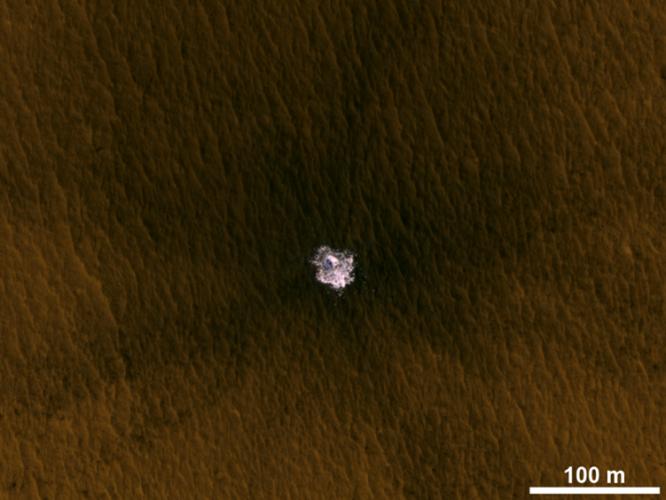Where water will be easiest to find on Mars
The more resources we have to transport to our neighboring planet, the more expensive a manned mission to Mars will be. Current concepts therefore rely on the human inhabitants using the resources that Mars makes available to them. On the one hand, there is the carbon dioxide atmosphere, from which methane can be obtained as fuel for the return flight – and on the other, there are water and ice deposits from which oxygen and drinking water can be obtained.
It is already known that Mars is not completely dry. While the atmosphere is available everywhere (although it becomes thinner with increasing altitude), the water is distributed very unevenly. There are thick ice caps at the poles, but it is also very cold there. Ideally, one would land as close as possible to the equator, because it is warmest there (sometimes up to 20 degrees Celsius or 68 degrees Fahrenheit). But that’s also where you’ll find the least amount of ice.
What’s the best compromise? In a paper in Nature Astronomy, researchers now present the first results of the Mars Subsurface Water Ice Mapping (SWIM) project, which aims to search for ice deposits at shallow depths in the mid-latitudes. To do this, scientists used several independent data sources, usually from Mars satellites. This proved to be not so easy because the area covered and the resolution of the data did not match.
But ultimately, the researchers were successful. The composite ice consistency maps show that the vast plains of Arcadia Planitia and the extensive glacial networks above the Deuteronilus Mensae meet most of the criteria for accessible ice-rich subsurface material. Their area of choice, however, is Arcadia Planitia, and in this they agree with NASA and SpaceX. The largely flat landscape also has the advantage that landing there will be easier. Want to check it out yourself because you’re planning your own expedition? No problem: The ice consistency and ice thickness maps are available on the SWIM project website, along with the associated data for each ice detection method.

